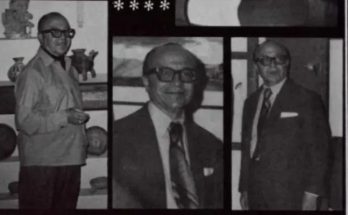By Luis Felipe Rodriguez
Miguelito Malo, in his Guide to San Miguel, states that indigenous people exchanged their old and deep-rooted beliefs for those brought and imposed by the Spanish invader. In fact, the Indians knew how to dilute, mix, merge, and disguise the residue of their religious past and graft it onto the new cult. This is the origin of countless beautiful Indian chapels now part of San Miguel de Allende’s urban area, as well as in rural areas outside the city limits.
The chapels, or “Calvarios de la Conquista,” were authorized by royal certificates and at the request of conquistadors and prominent Indian leaders (caciques). This is how the Indian often paid for favors, alliances, or political and religious favors. Fearful of losing authority, control, and even secular respect if their people attended the Spanish churches, Indians built these chapels so they could avoid inspections, pay tribute in their own way to sacred images and souls, and still remain active participants in the business of the conquest.
Some of these chapels remain, though many have been destroyed by disuse or construction. Among the chapels that are extant: the Chapel of Indians of the Lord of Mercy on Organos in Centro; Chapel of the Holy Kings on Cinco de Mayo in Colonia Allende; Chapel of the Indians of San Antonio Colorado in Colonia Las Cuevitas; Chapel of the Indians in the Ojo de Agua neighborhood; and one behind Chapel of the Indians that at one point belonged to Senor del Llanito and that was returned to the Ojo de Agua chapel.
According to Cornelio López, chronicler of the city, Viceroyalty authorities, using the «Acordada» (laws and regulations), ordered that crosses be erected near the sentry boxes on the edge of the royal roads. These were macabre places where body parts of those executed were affixed.
Another story has to do with Manuel de Luna, who was baptized along with three other caciques. This act was meant to attract other indigenous people to Christianity, but members of the Chichimeca tribe were unhappy with these conversions and murdered and dismembered de Luna. His remains were buried in four places—where he died, on the Salida a Querétaro, on the Salida a Celaya, and the fourth in the archaeological zone of Agua Espinosa. For this reason, the crosses that mark these spots are called Cruz del Palo Cuarto (Cross of the Room). Only the one on Salida a Queretaro and the one at the exit to Guanajuato have been preserved.
Behind the Cruz de Palo Cuarto on Salida a Querétaro is a beautiful chapel dedicated to the Lord of Mercy. Access to the poorly maintained chapel is from a small alley off the Salida a Querétaro.
María Luisa Ortiz Ramírez says that her great-grandfather owned that lot, and that he gradually sold off the land until he was left with only the space where the atrium was. Her father, who was a bricklayer, built a couple of rooms on the site. Ortiz says that her grandfather said that it was named the Cross of the Room because many people were sentenced under a large tree that grows next to the cross. Many were executed; some were dismembered and their remains were buried nearby.
It is said that when digging to make the foundation in the area of the Cruz del Pueblo, some «burial sites» were found. The layout had to be modified so as not to disturb the deceased, some of whom were wearing military clothes. Ortiz says that when she was a child she would cut nopales on that hill and bring them to the Dominican mothers, who in turn gave them food. One day she met an elegant man who invited her to his house. On the way, he told her that he could «help» her with whatever she needed. At some point after they reached his house he left her alone. She noticed that the house was decorated with strange objects that she now qualifies as demonic. On a table were many gold coins. She was terrified and said she had to leave because her father was waiting for her. “It’s not true,” the man said. Pointing to a place on the hill, he continued, “your father is not close; the one who walks over there, is your brother.” “I have to go now,» she insisted, and left. She told her mother that the man must have been “the evil one.”
Ortiz believes that faith is what protected her, and she is keen to participate in religious ceremonies. She claims to have a sixth sense, and can detect people who have a bad vibe. She claims that on a number of occasions people have come to visit the chapel, but when she goes to see where they came from, she can no longer see them. “I’m not afraid. I remain inside the chapel,” she says. “I have long conversations with the Lord, to whom I tell my problems, and I know that, although I am without a husband, He will provide what I need. He even blessed me with this granddaughter who accompanies me. When my daughter realized that her daughter was deaf, she left.”




